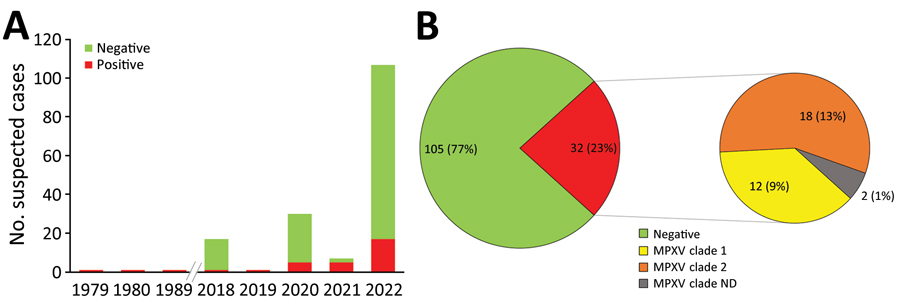Volume 30, Number 3—March 2024
Synopsis
Concurrent Clade I and Clade II Monkeypox Virus Circulation, Cameroon, 1979–2022
Figure 1

Figure 1. Mpox cases in a study of concurrent clade I and clade II MPXV circulation, Cameroon, 1979–2022. A) Epidemiologic curve of 137 suspected mpox cases. A 30-year gap occurred between the first 3 reported mpox cases and the consecutive cases since 2018, demonstrating increased surveillance in the country. The peak in 2022 corresponds to the worldwide alert raised on mpox, which led to enhanced mpox surveillance in Cameroon. B) Mpox genotyping results showing both clade I and clade II MPXV were identified. MPXV, monkeypox virus; ND, not determined.
1Current affiliation: Maryland Department of Agriculture, Salisbury, Maryland, USA.
Page created: January 18, 2024
Page updated: February 22, 2024
Page reviewed: February 22, 2024
The conclusions, findings, and opinions expressed by authors contributing to this journal do not necessarily reflect the official position of the U.S. Department of Health and Human Services, the Public Health Service, the Centers for Disease Control and Prevention, or the authors' affiliated institutions. Use of trade names is for identification only and does not imply endorsement by any of the groups named above.